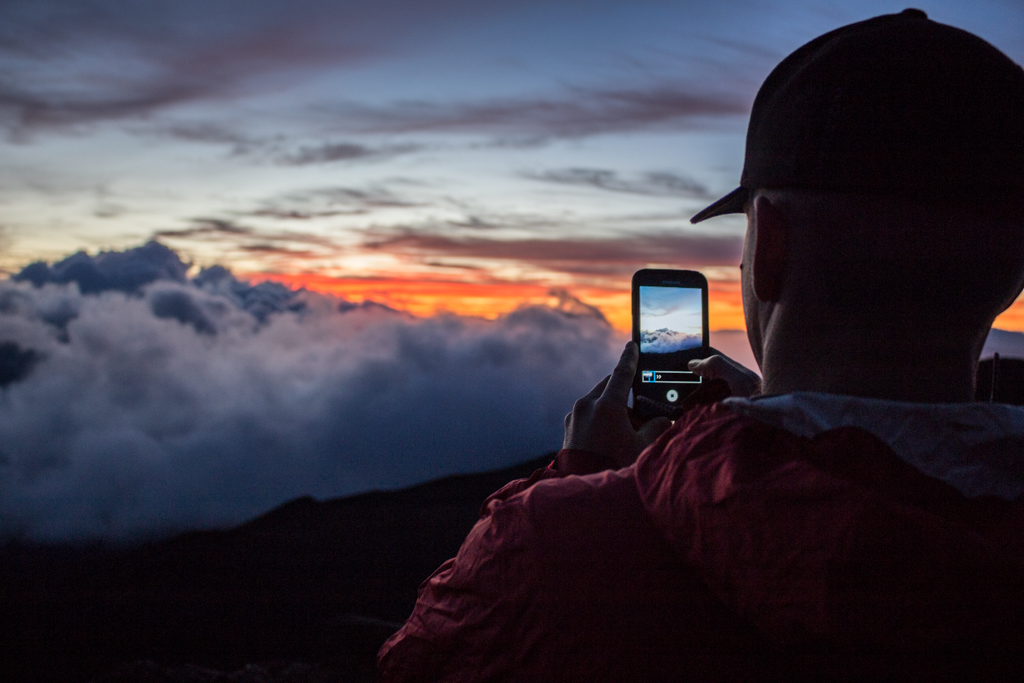Summiting Haleakala Crater for sunrise was something I always thought was only achievable by embarking on a strenuous trek.
To be fair, at just 16 years of age on my last visit to Maui, I hadn’t bothered to research it; I was far more interested in browning my skin at the beach all day than exerting myself–before the crack of dawn, no less–for some silly view.
Little did I know that not only was I 100%, unequivocally wrong about Haleakala’s accessibility, but my brother had planned for us to take on the challenge and revealed this to me after dinner the night before our excursion.
We’d simply drive to the summit, located in Haleakala National Park, just like every other average, non-suicidal tourist.
Now this was a plan I could get behind.
Travelers Take Note: As of February 1, 2017, visitors in personal or rental vehicles wishing to view sunrise at Haleakalā National Park are required to make sunrise viewing reservations ahead of time at recreation.gov.
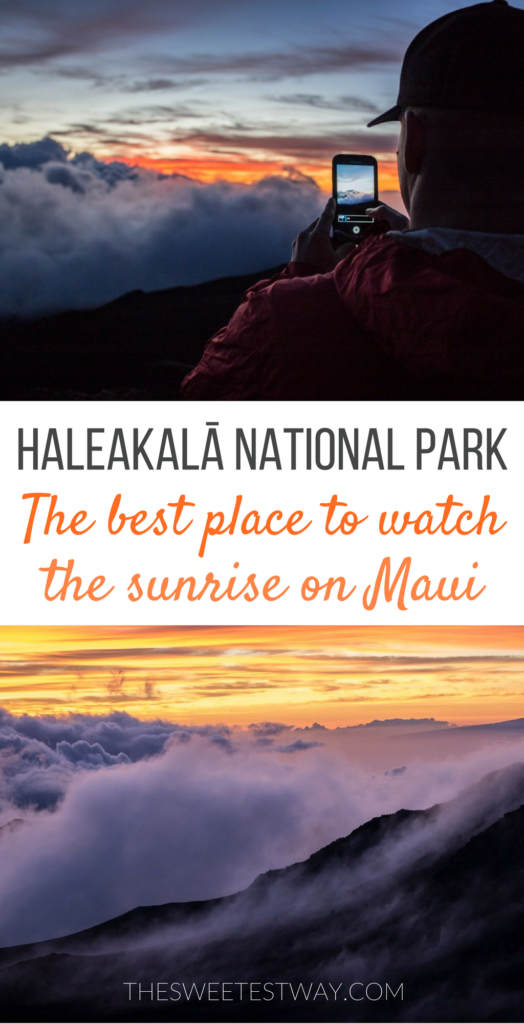
Noting his strict 4:15 am departure time, I didn’t even stop to glance at the clock as I put myself to bed that night. I don’t function well on little sleep, and I had no intention of resembling the walking dead for what was sure to be a special experience.
The next morning as I opened the rental car door and tumbled into the darkness, the cold air hit me like a sack of bricks.
I couldn’t help but let out a whimper as I came to the startling realization that I was severely underdressed for the occasion. Surveying my outfit–feather-light trainers, jeans, a sweater and a leather jacket–I laughed at the idea that I’d almost left the jacket behind.
We’d just reached the summit of Haleakala Crater (Haleakala meaning “House of the Sun” in Hawaiian); this massive volcano, Maui’s largest, forms more than 75% of the island and contains its highest peak at 10,023 feet.
We’d left Kihei roughly an hour and a half earlier, where the air was a balmy 70°F.
“This is Maui,” I remember thinking as we’d piled into the car, groggy and in need of coffee. “How cold can it get?”
But as we climbed ever higher up the winding switchback highway leading to Haleakala National Park, the temperature plummeted–3°F for every 1,000 feet gained–so that by the time we reached the visitor’s center at 9,740 feet, well, my regret was a dish served cold that morning.
Upon our arrival, the clock read 5:57. The temperature, 43°F.
And yet, the parking lot was overflowing. It was Veteran’s Day this particular day and so the entrance fee to the national park had been waived; we hadn’t realized this beforehand, so for us it was a pleasant surprise, but perhaps others had purposely chosen this day to make the early morning trek.
Perhaps sunrise at Haleakala Crater is just so incredible that it draws a thick crowd no matter the occasion.
We’d soon find out.
Once our car was packed in like a sardine, we made way for the lookout point. A large majority of the crowd was gathering at the lowest accessible viewing spot, armed with selfie sticks and draped in sleeping bags and blankets, towels and sarongs, and even the odd hotel bathrobe. Many were even more poorly dressed than I.
Knowing we could do much better than to hang back with the laziest of the shivering tourist throng, we hung a sharp right and began climbing a footpath that would lead us to a far higher viewing point, one with fewer people to contend with for front-row seats.
The sharp air cut into our lungs as we huffed and puffed up the hill, desperate for whatever scant oxygen hung in the wind. There was no time to waste; the surrounding skies were beginning to brighten, and we didn’t want to miss the show.
The trail curved back to the left and the crowd began to thin; we took another hard right, this time off the footpath and into the midst of volcanic boulders. We settled on a secluded spot and set up camp.
I set up my GoPro on its mini tripod to capture the sunrise on video (click here for the resulting clip) and hunkered next to a rock as the universe began to expand right before my very eyes.
The sky began a deep royal blue, with a neon orange glow at its base, resembling the very lava contained deep below the surface.
Bulbous blue clouds hung in the background, inching toward us, waiting for the perfect moment to make their grand entrance. 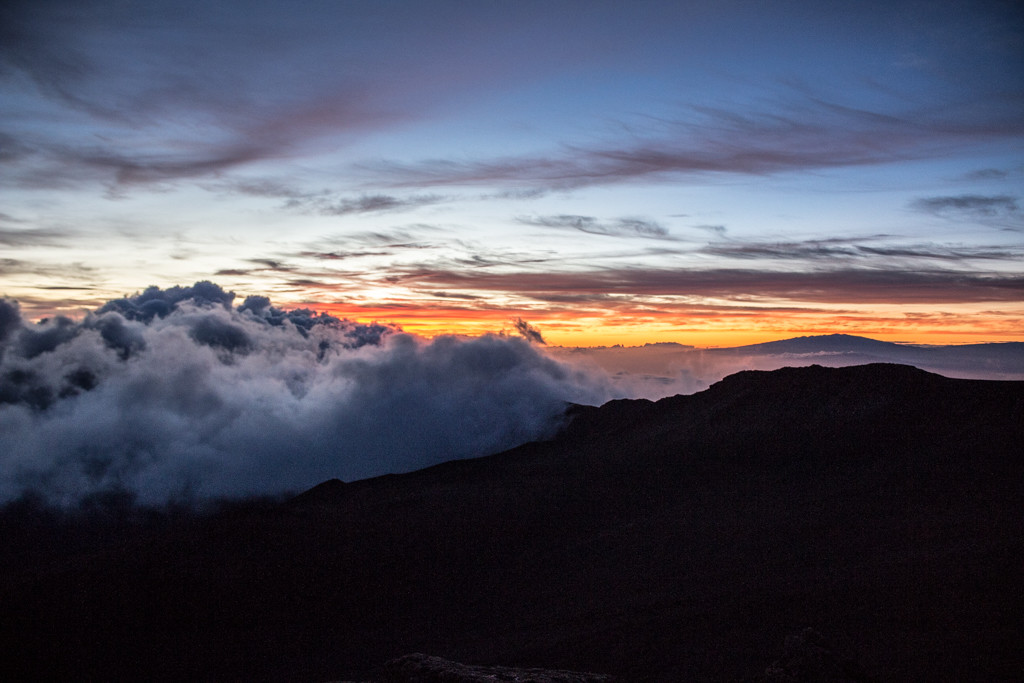
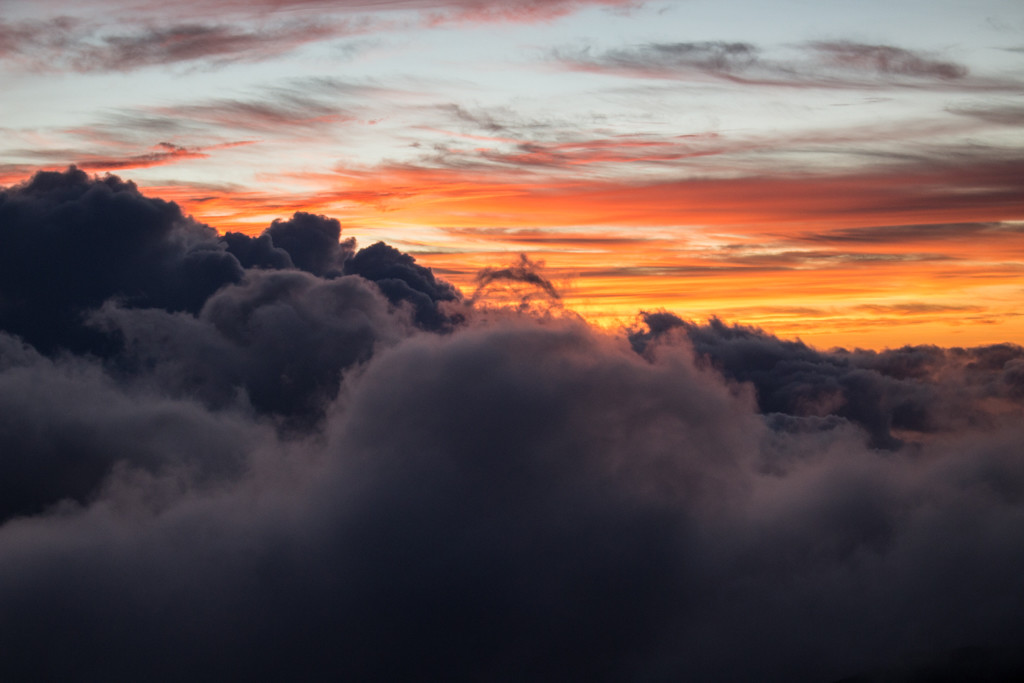
By the time they began spilling forth over the crater’s edge, they’d transformed from blue to purple, shredded by the wind into razor-thin wisps.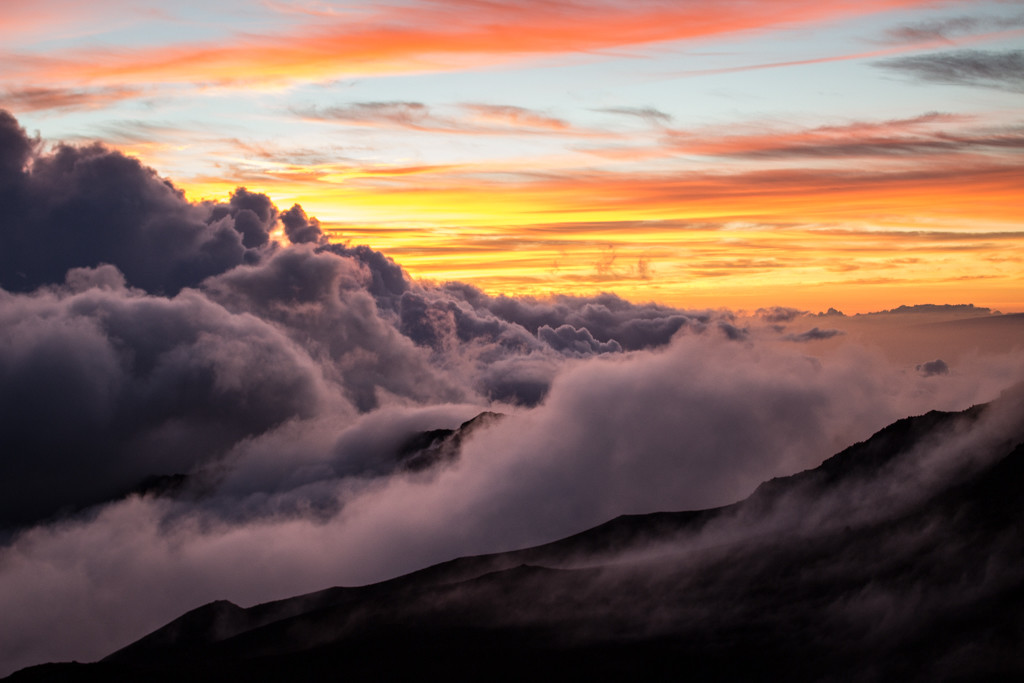
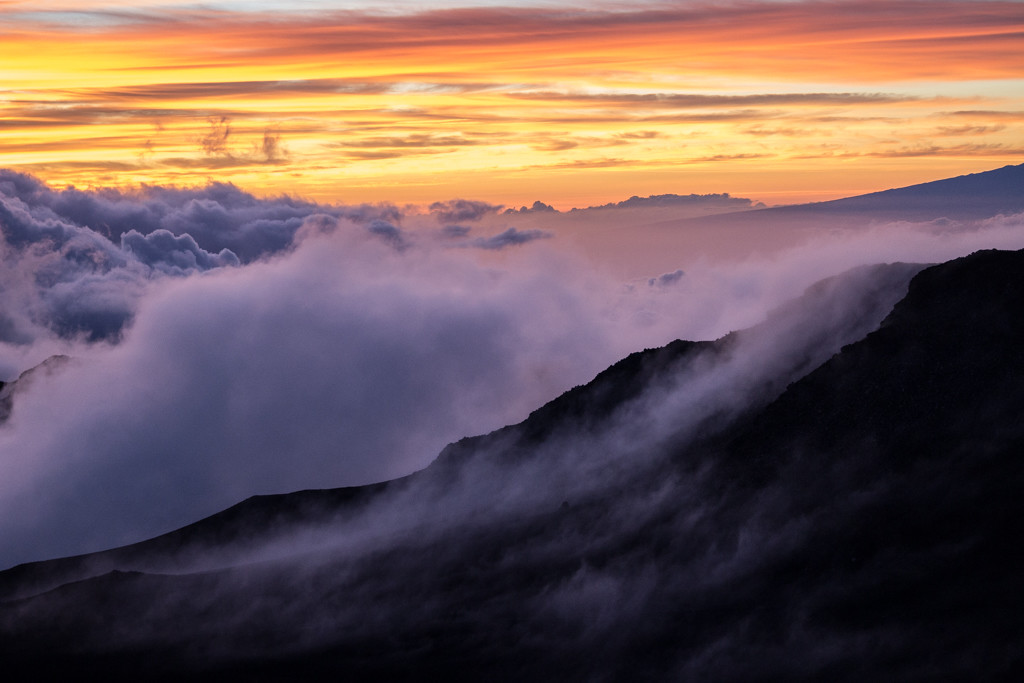
High above it all, a few rogue clouds burned bright pink as the fire of the sun ignited everything in its rising path.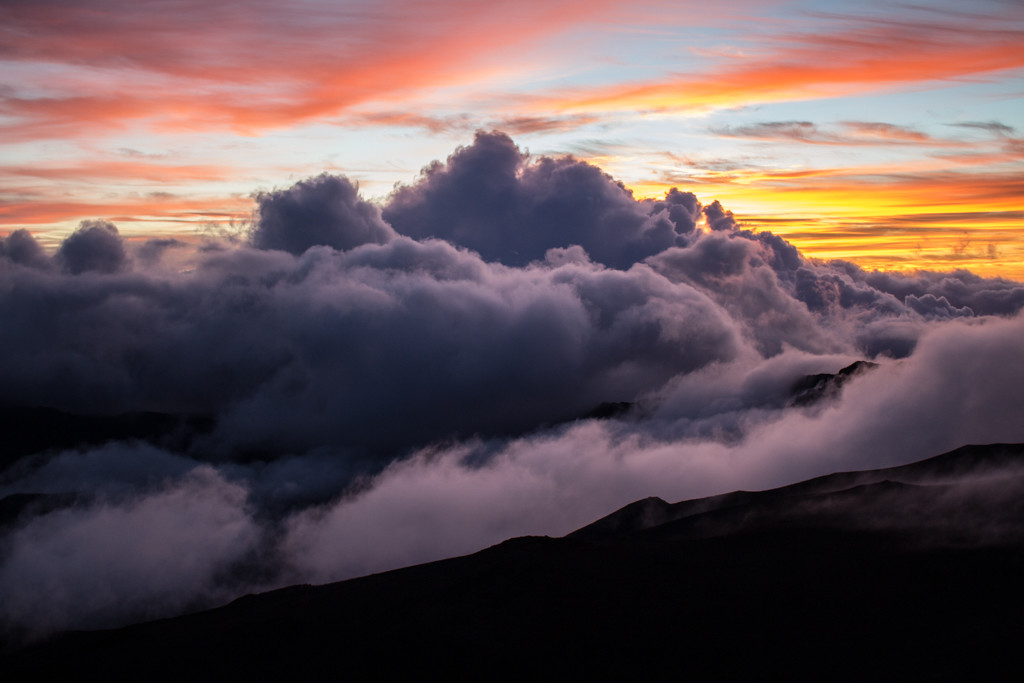
We made sure to get ample evidence of our presence at this incredible display of nature. All the while, my fingers and toes lost all feeling and each click of my camera’s shutter release became increasingly difficult. 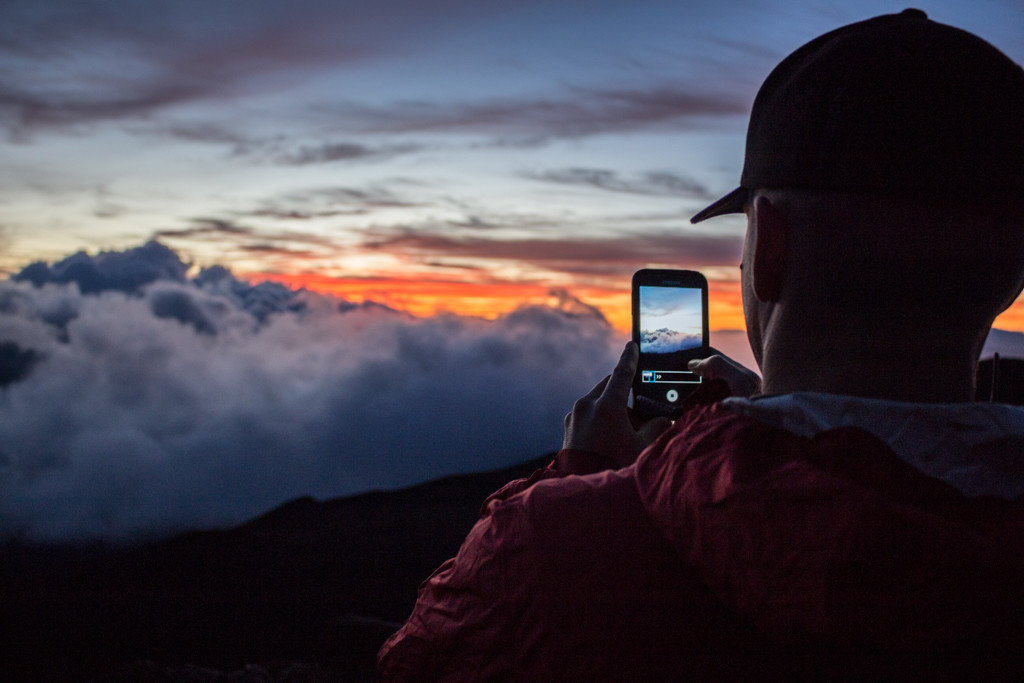
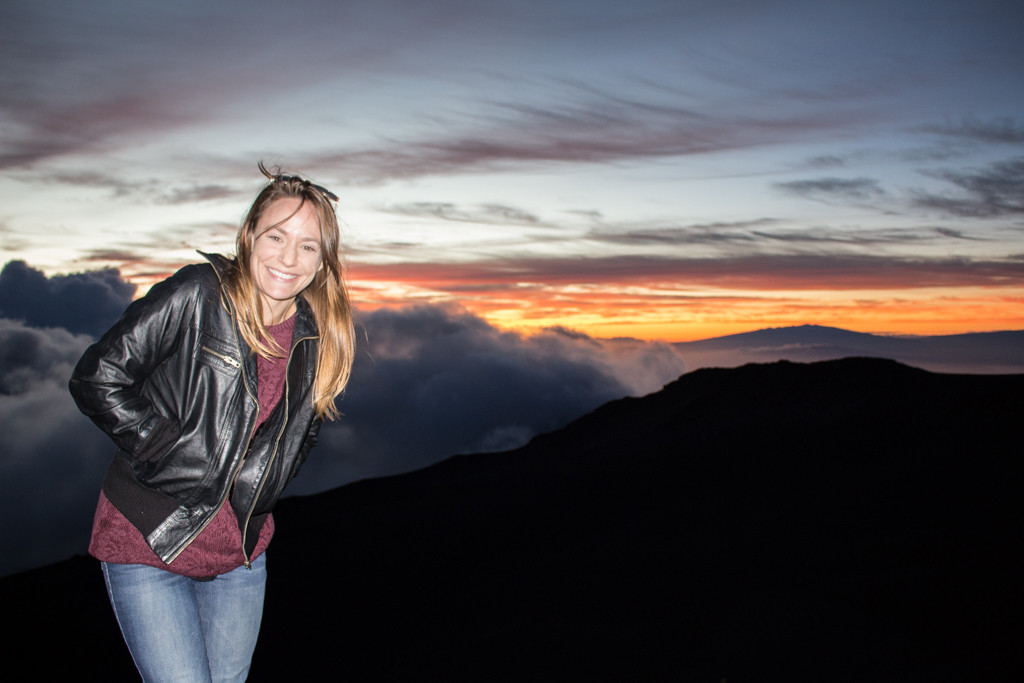
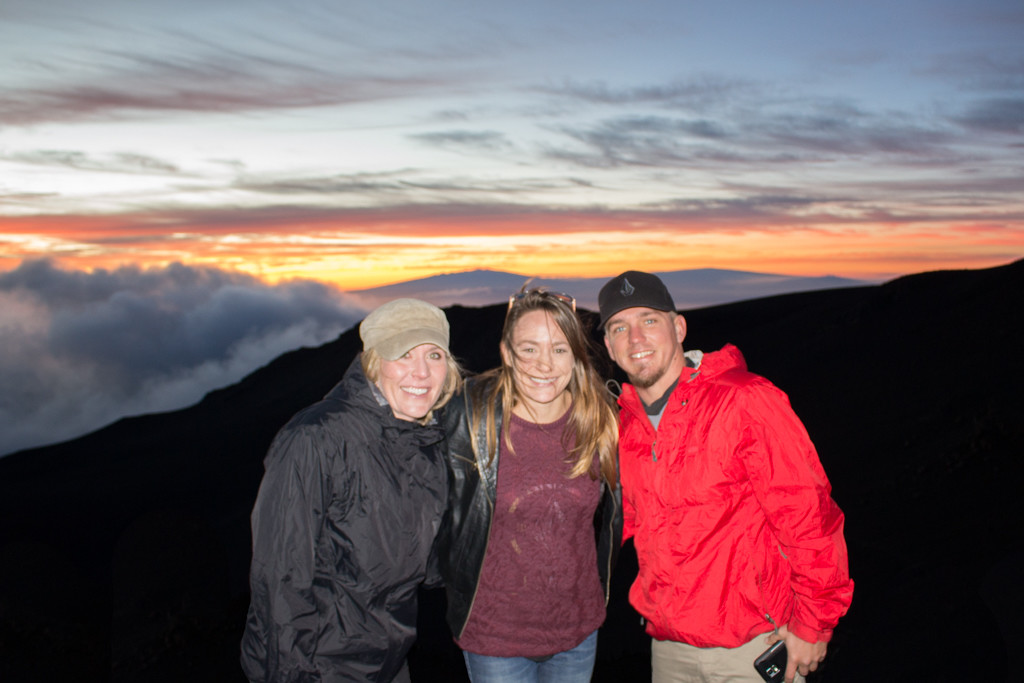
But the biting wind and pain in our digits were no match for the awe we felt. By now, there was no doubt that this volcano was indeed the “House of the Sun.”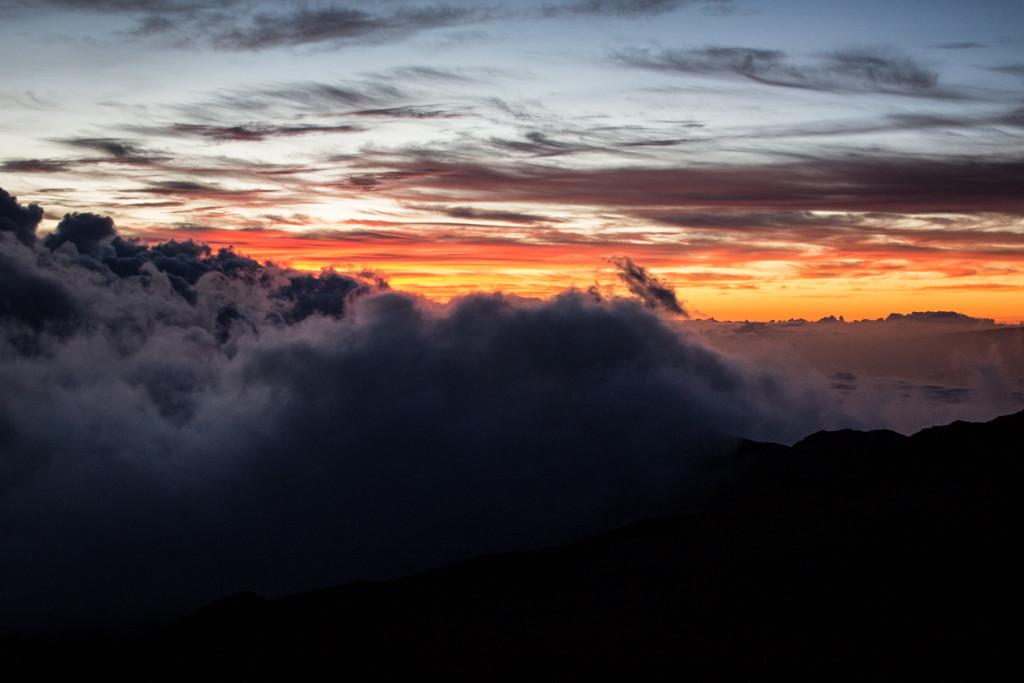
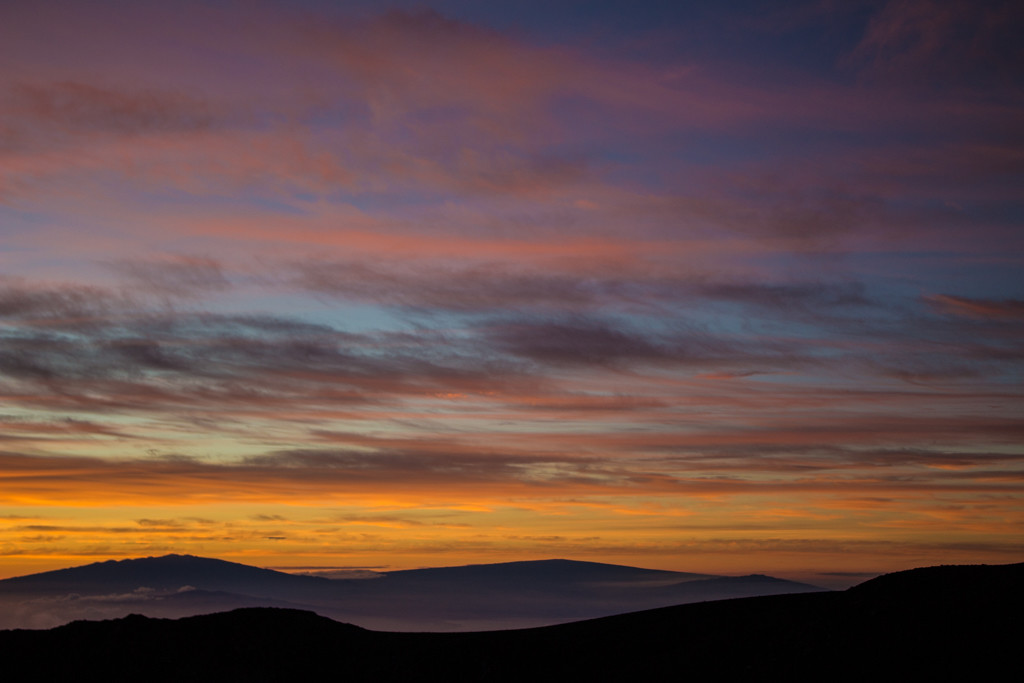
Ever so gradually, the colors in the sky became muted versions of their former selves. The main event was coming to an end and the crowd was dispersing, but there was still far more to see.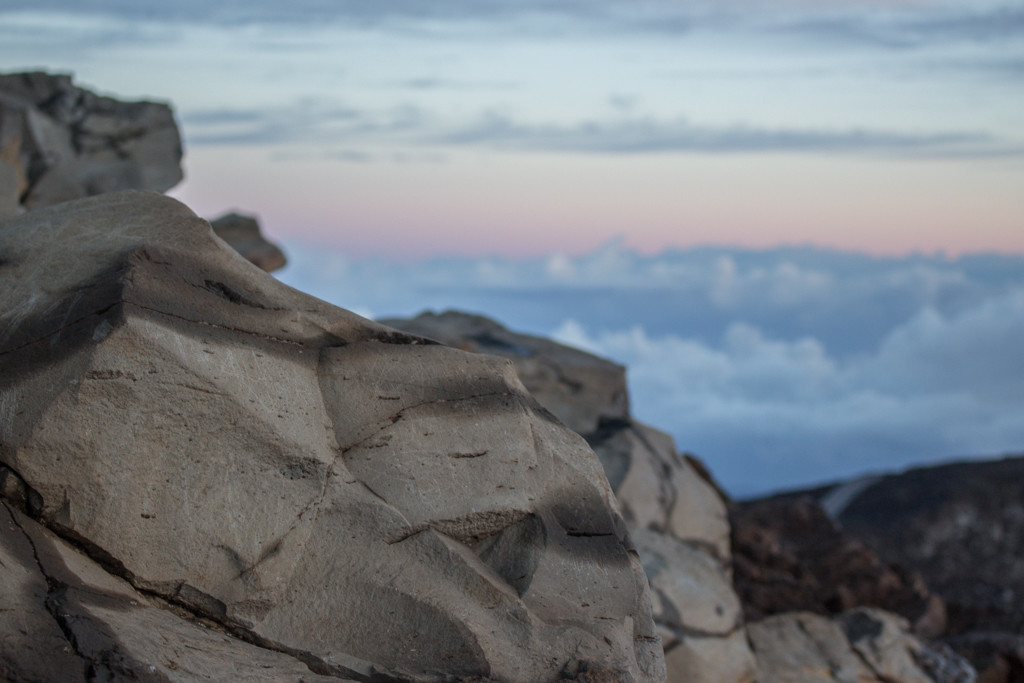
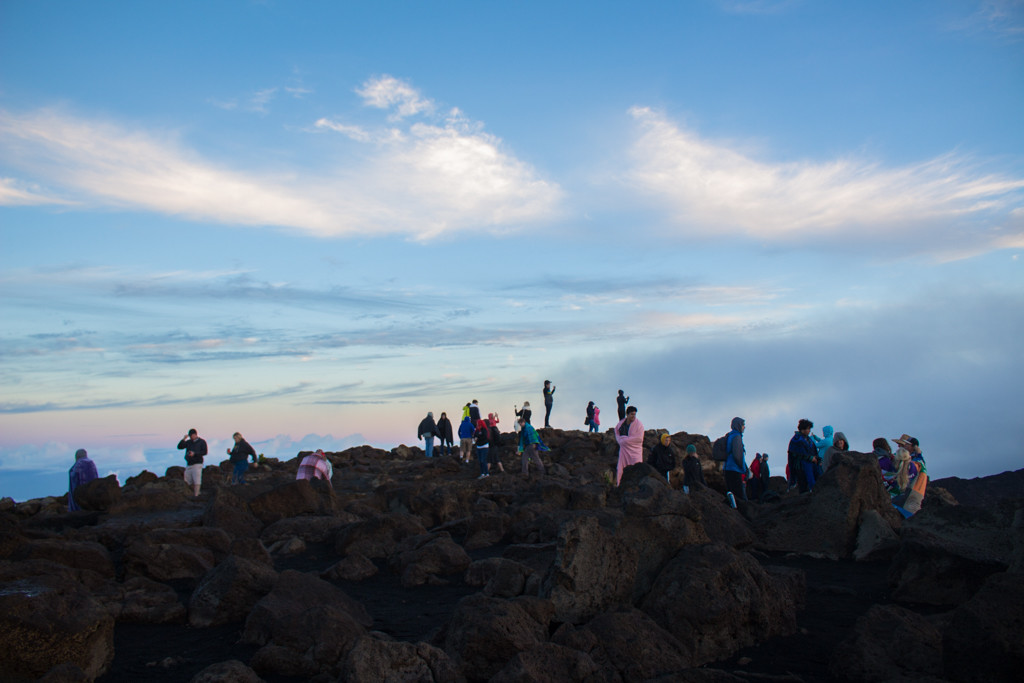
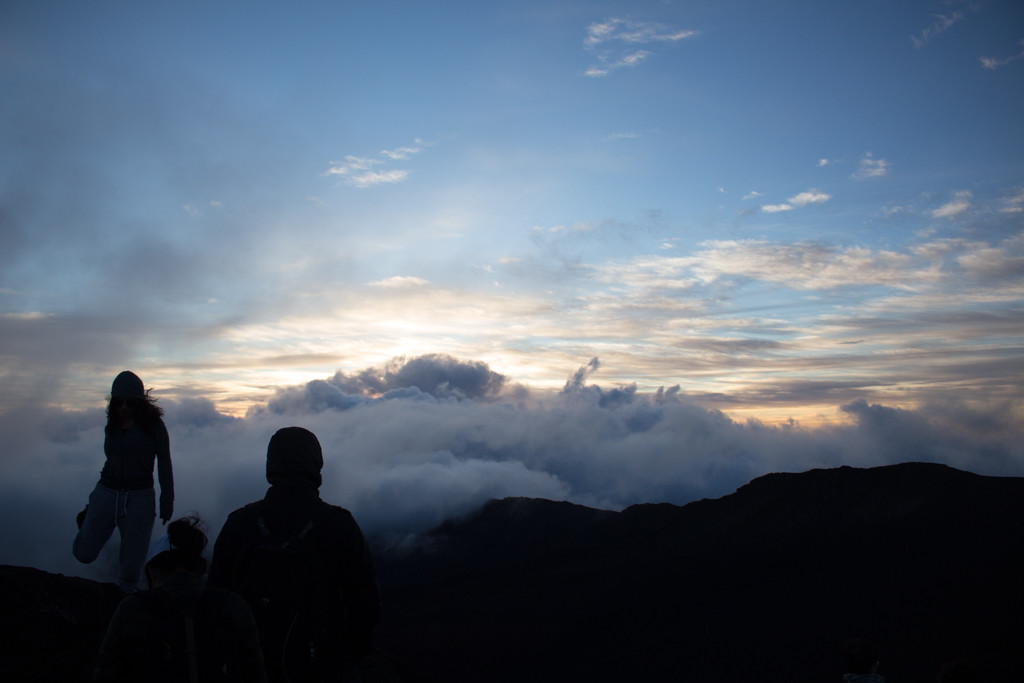
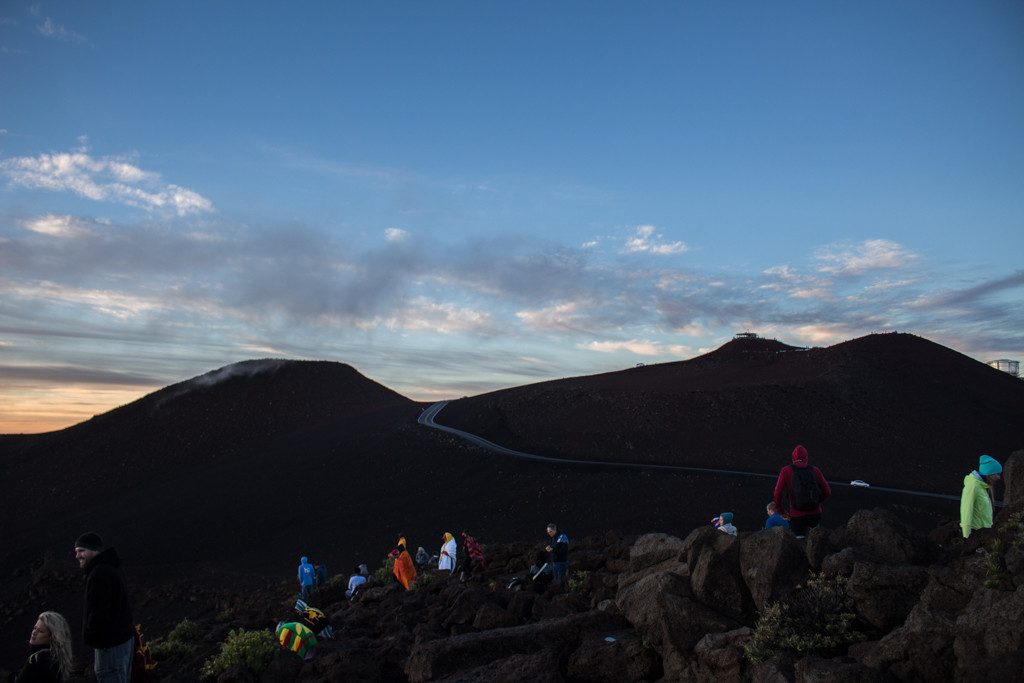
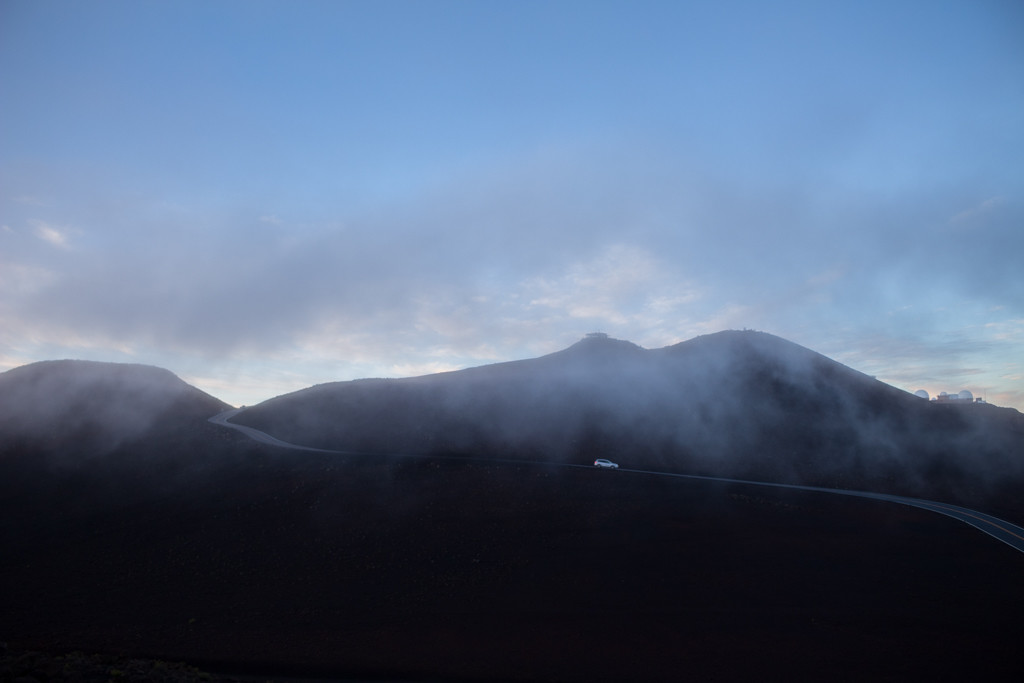
We followed the trail back down to the visitor center, popping inside momentarily to escape the ferocious wind. From here we were able to take in the crater from a new angle, shrouded in fog and whimsy, and with the full force of the sun now shining upon it.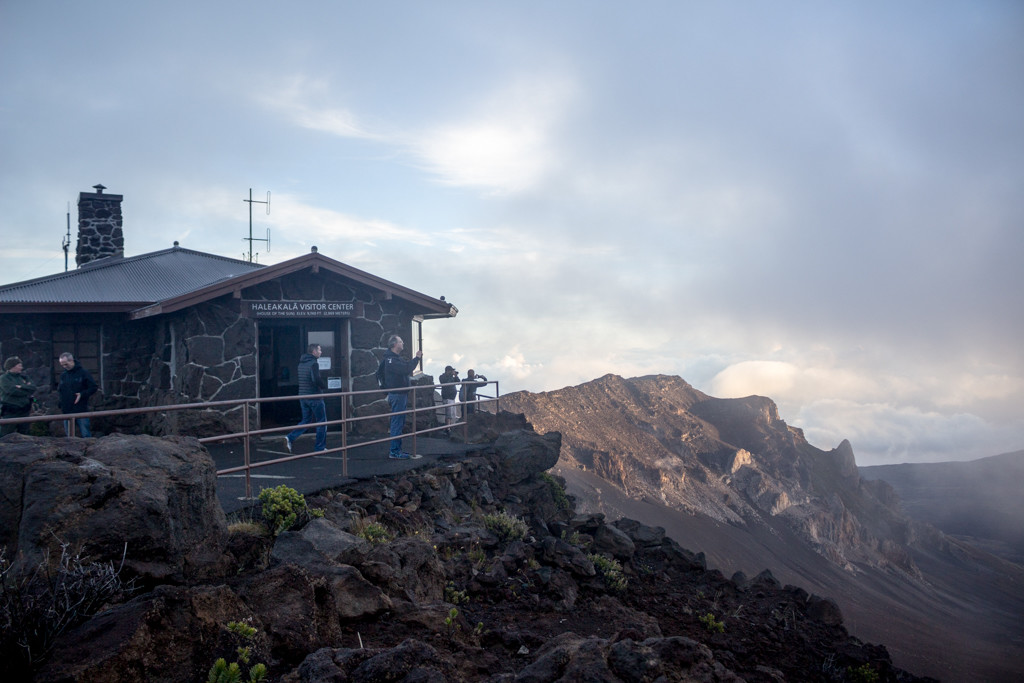
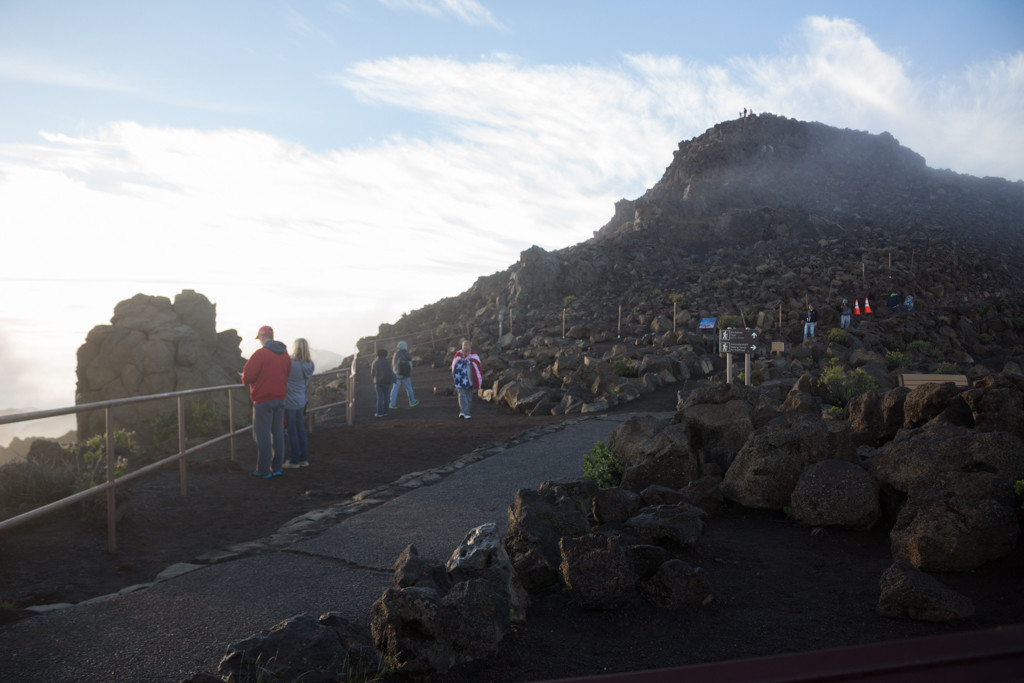
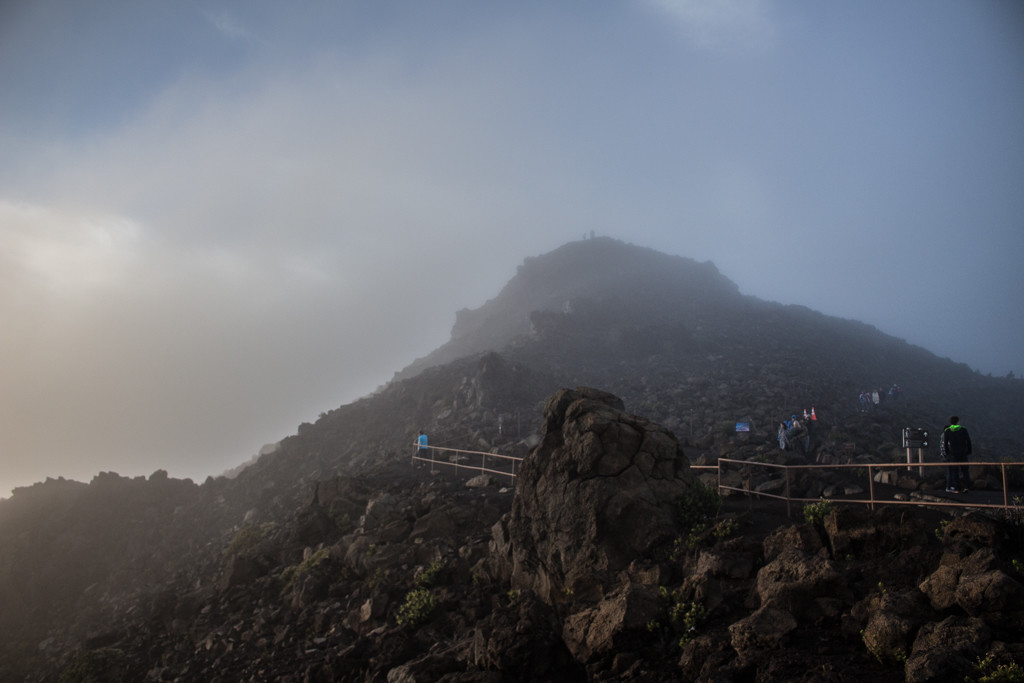
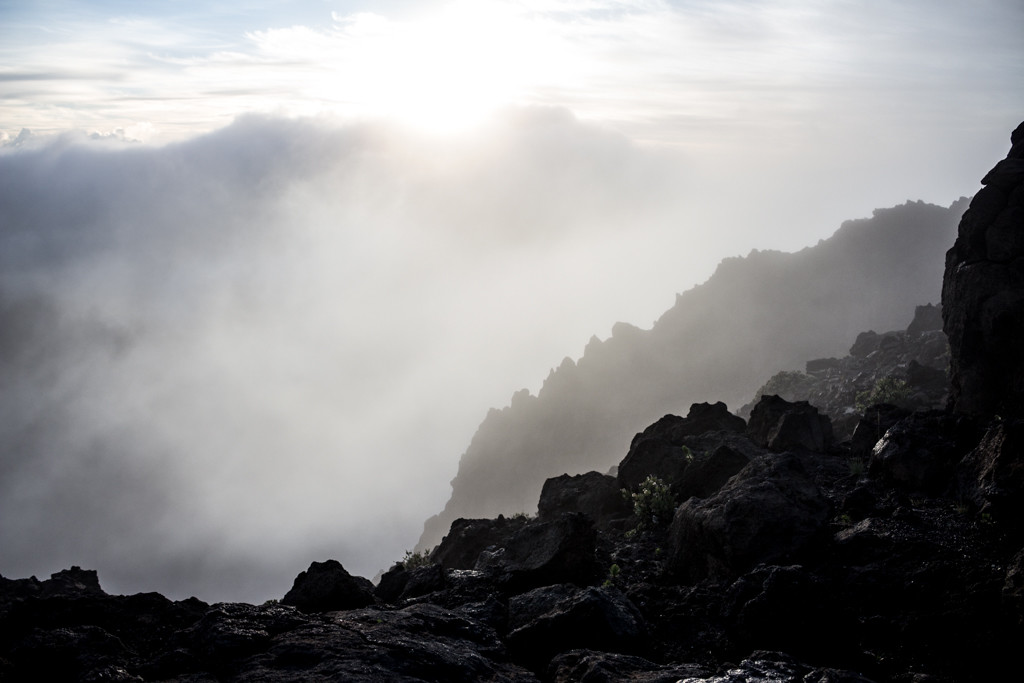
The places that had previously been blanketed by darkness were suddenly illuminated, and all at once the secrets of the volcano’s peak were revealed. As we meandered back to the car to head for our second stop, we admired the colorful volcanic rock and the tenacious vegetation that had chosen this barren landscape to call home.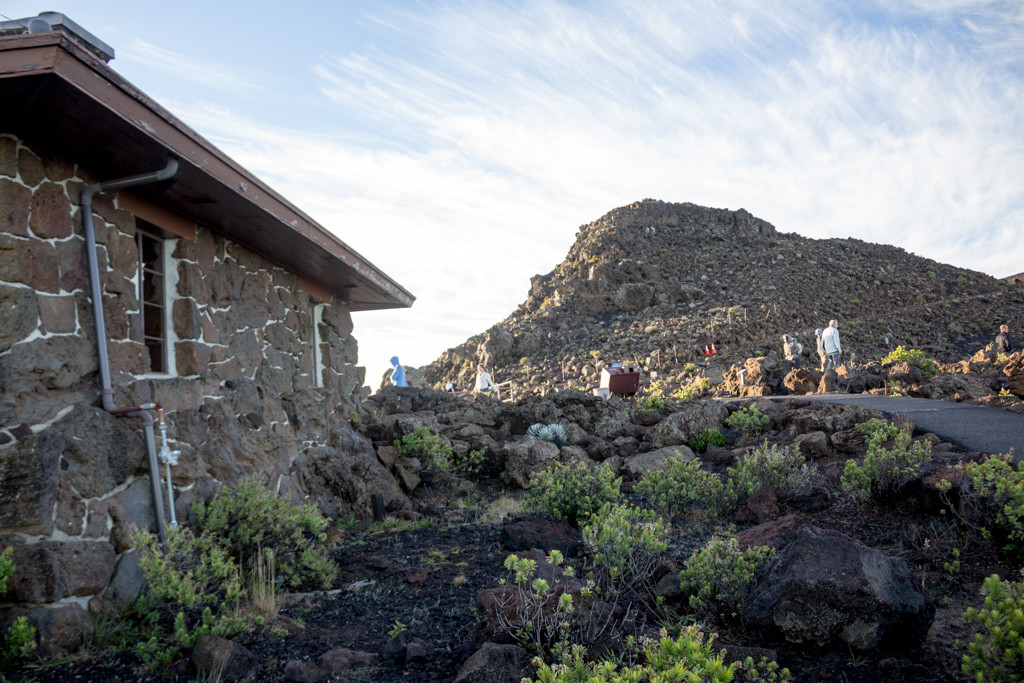
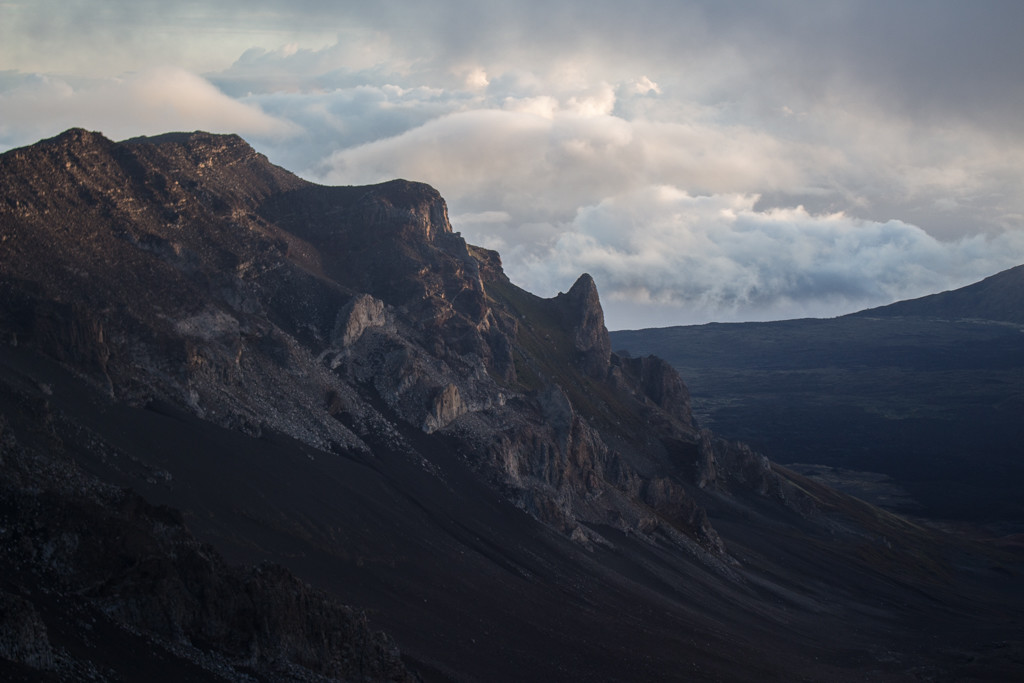
Once in the car, we headed further up the volcano, to its highest peak. From there, we could see the Haleakala Observatory and puffy white clouds stretching in every which direction. We may as well have been on top of the world.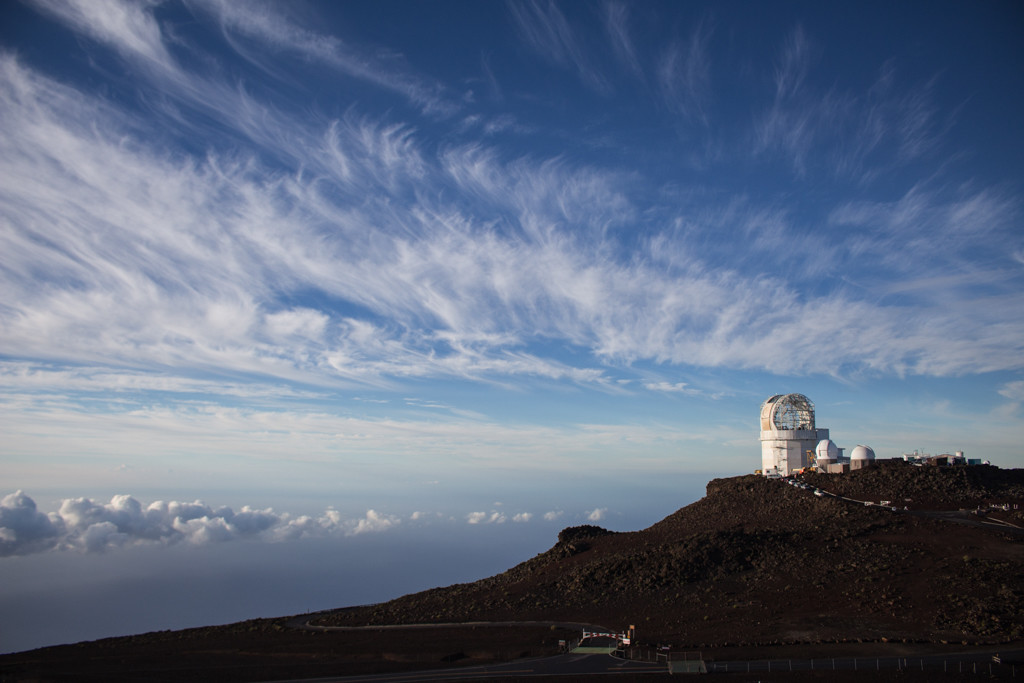
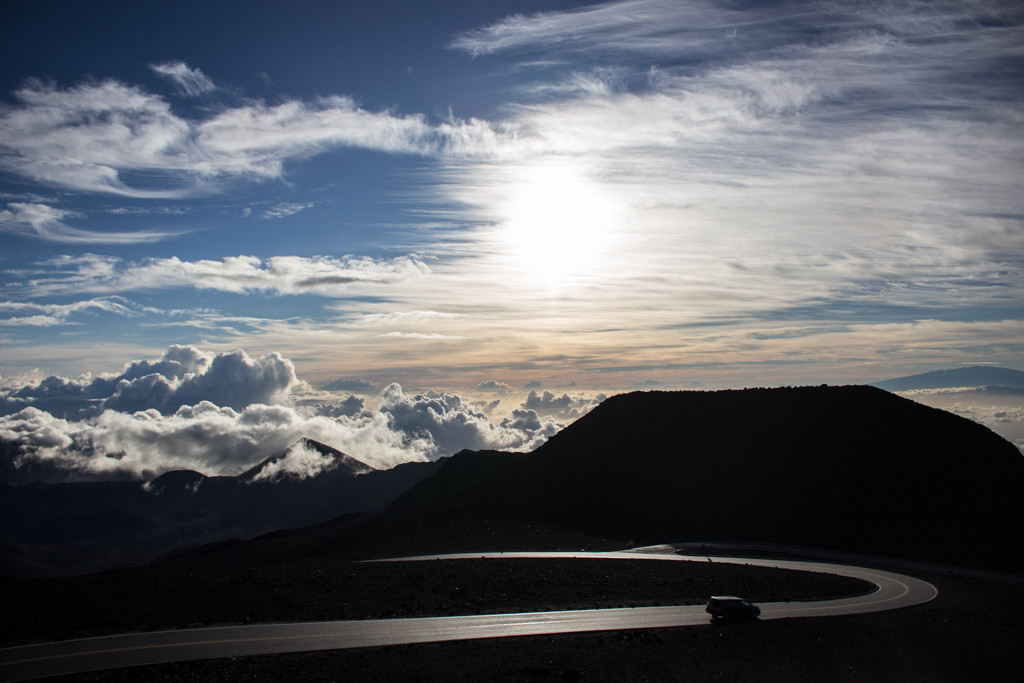
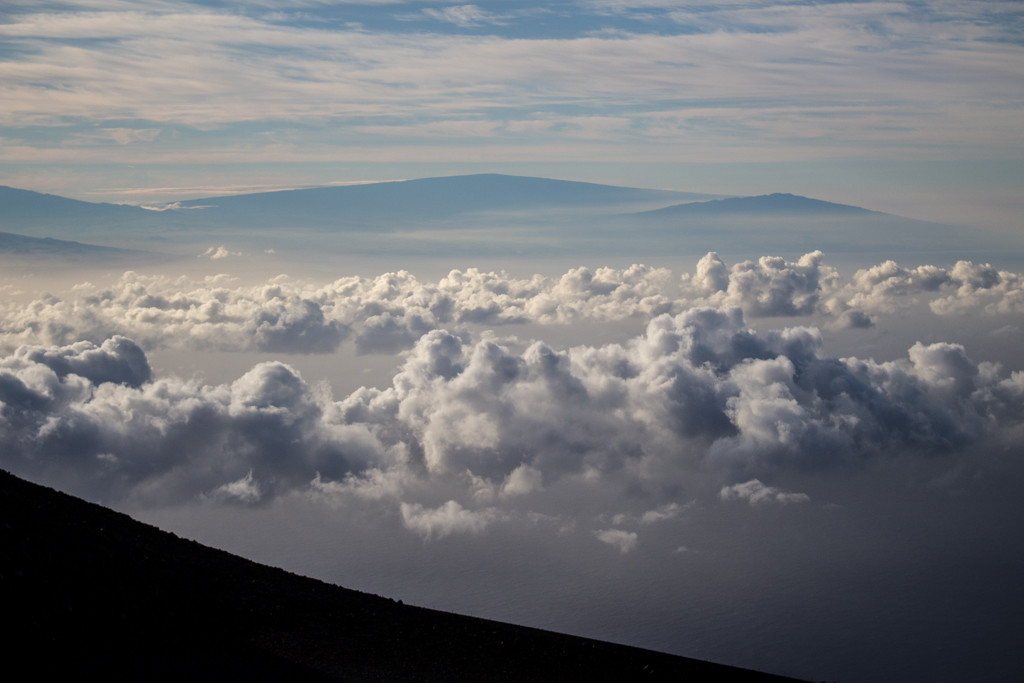
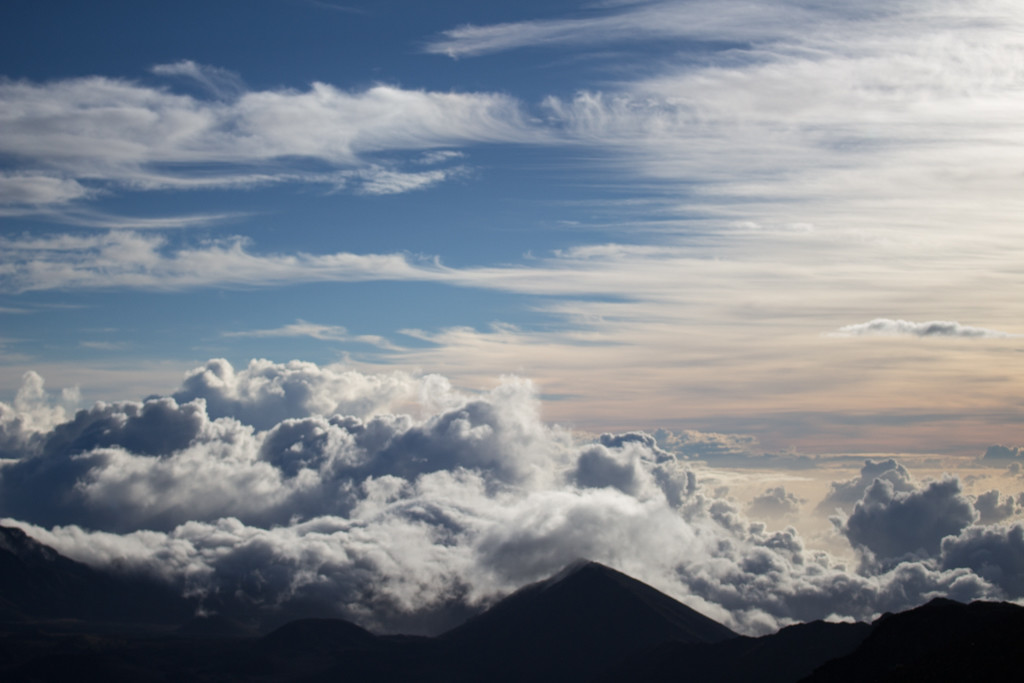
We also caught a glimpse of the rare Haleakala silversword, a member of the daisy family endemic to this Hawaiian volcano. These incredible plants can live up to 90 years but bloom just once in their life cycle, and sadly are an endangered species. The ultra-fine hairs covering each of the plant’s leaves catch rainwater and reflect sunlight, giving the plant its silvery sheen. 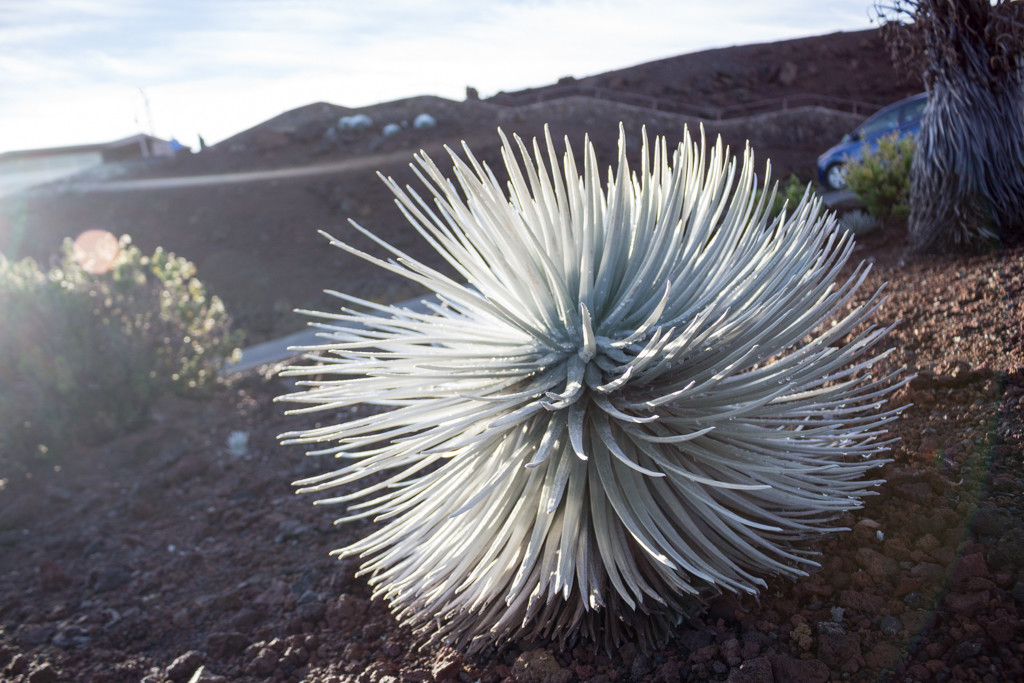
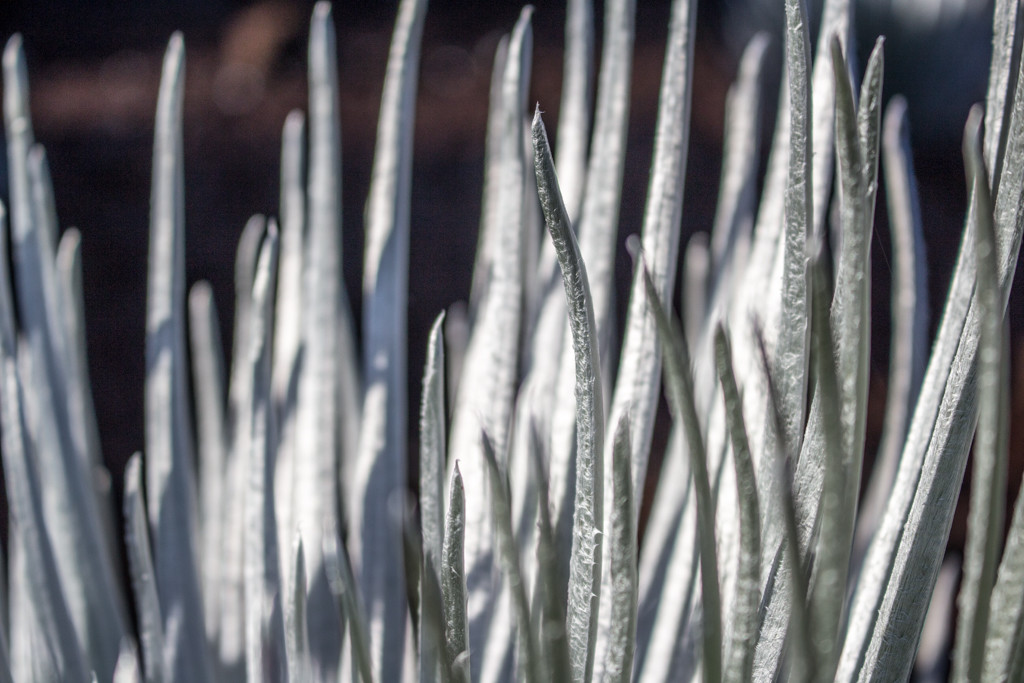
Finally, we bid our farewell to Haleakala Crater and began the drive back to sea level. With the sun now high in the sky, we could see the island in its entirety; from such a vantage point, it was truly a magnificent sight.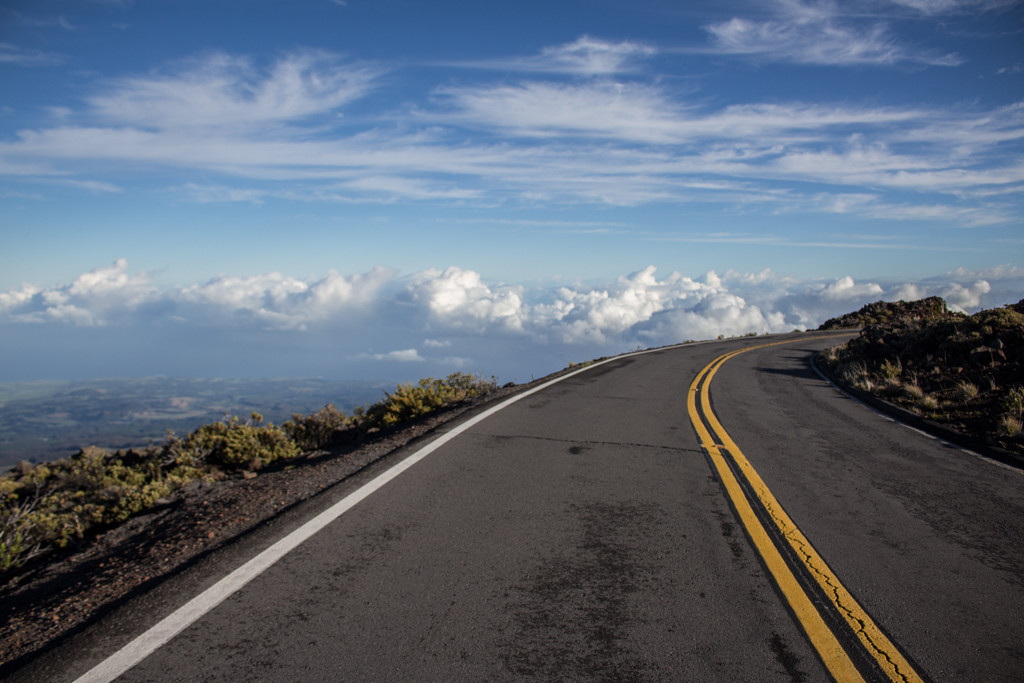
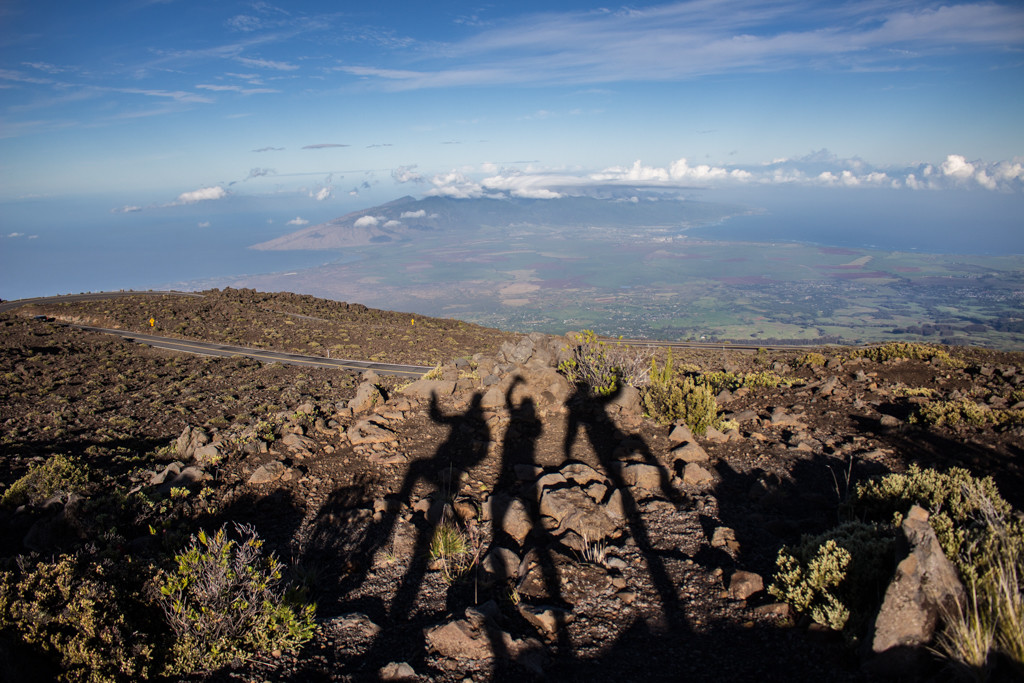
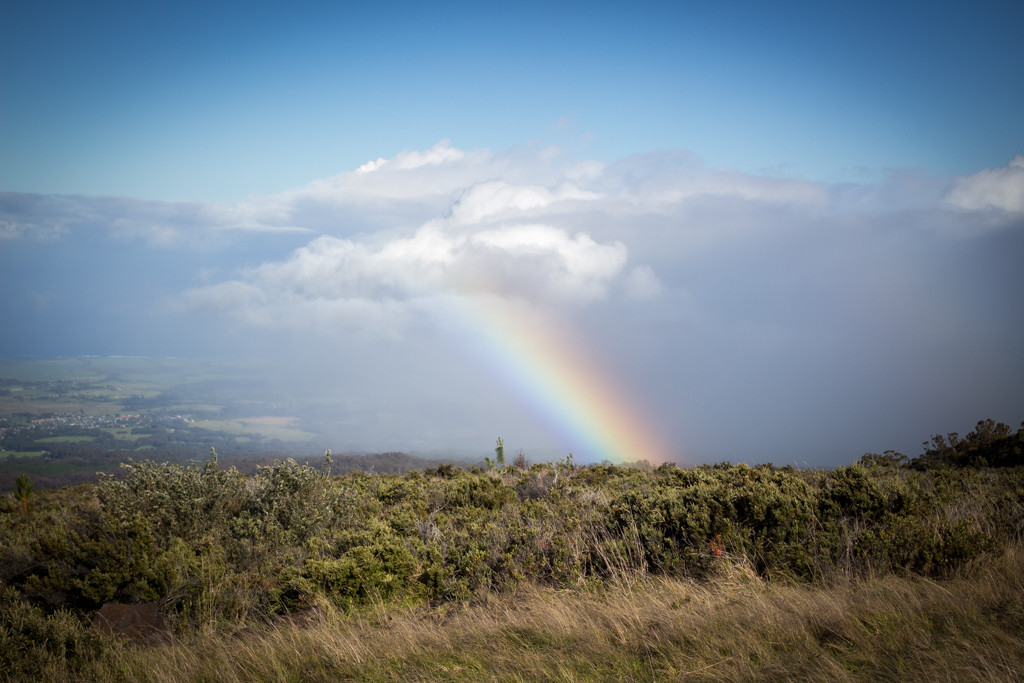
Despite the unexpectedly bone-chilling temperatures, summiting Haleakala crater for sunrise that morning was the best decision we could have made. If I had to do it all over again, I would; but maybe with a few extra layers next time.
Have you ever woken before dawn to watch the sunrise from someplace special? Would you summit Haleakala?

